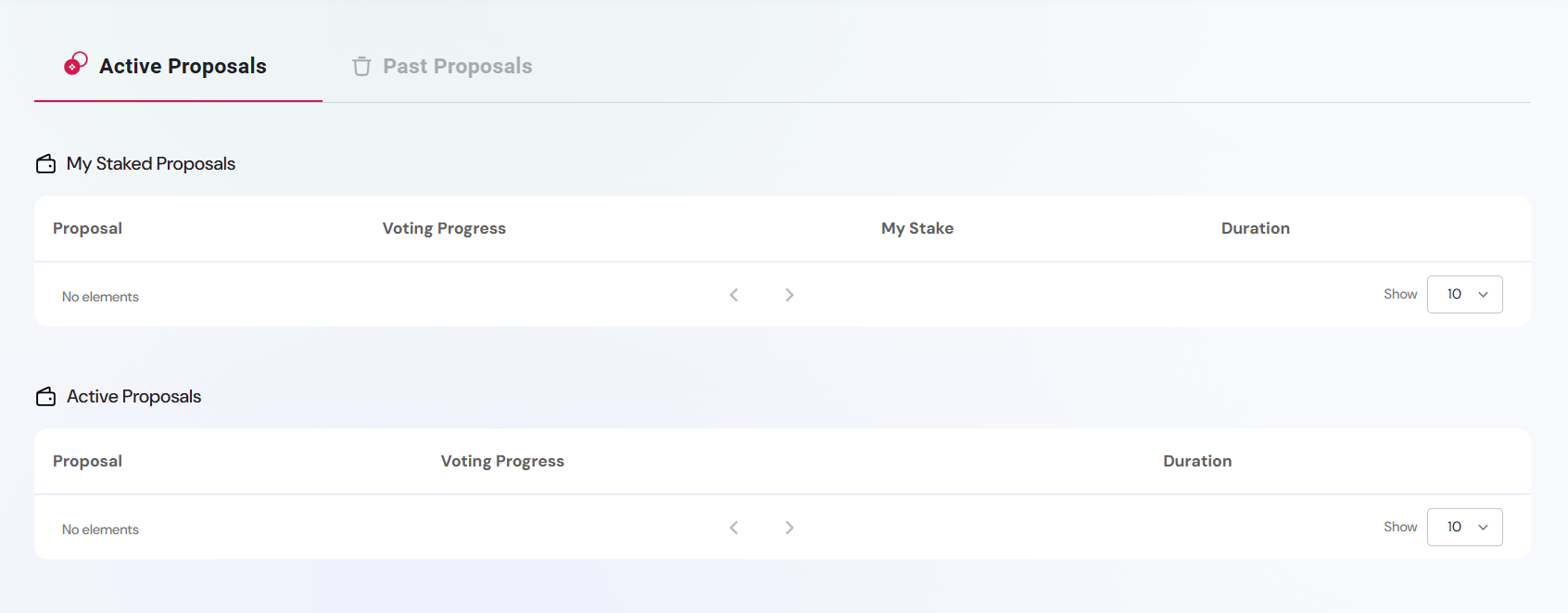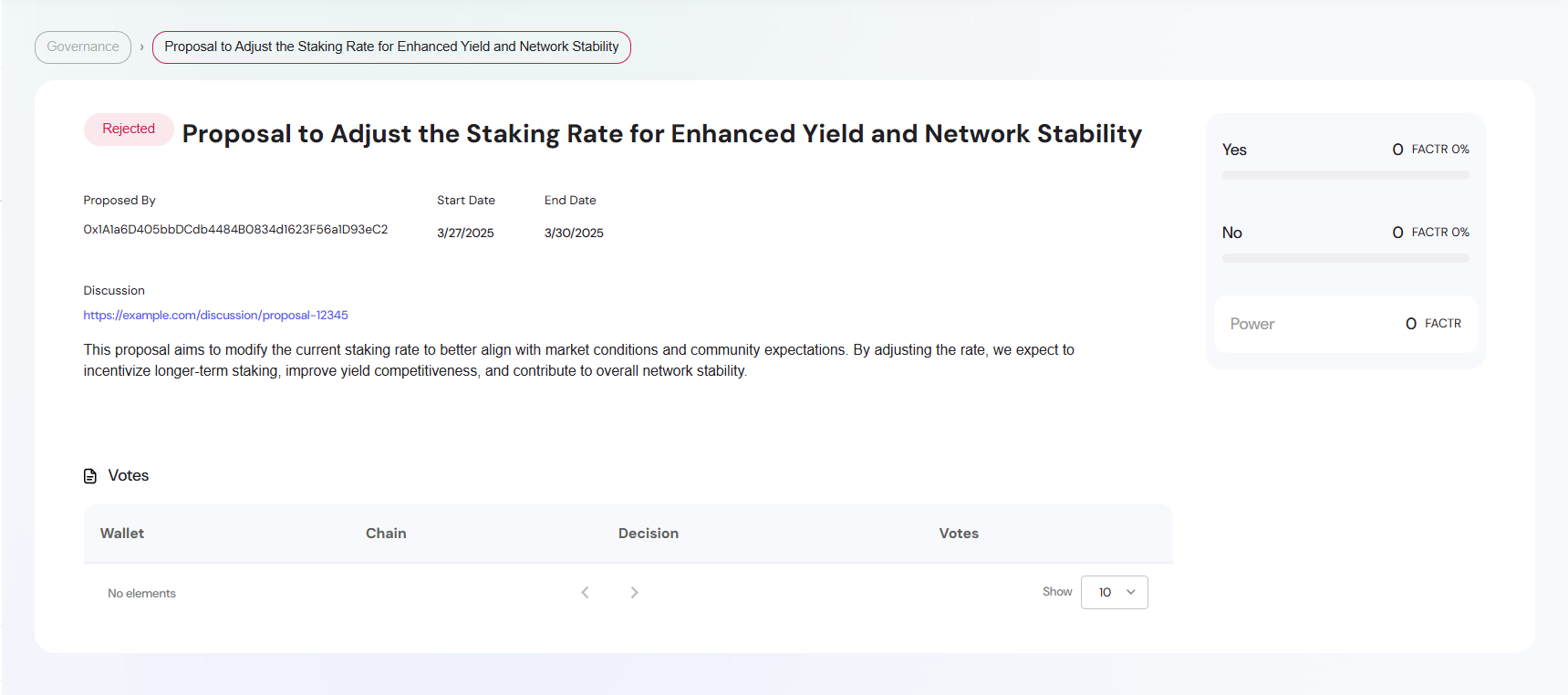Governance Module
The governance module enables decentralized decision-making by allowing token holders to vote on proposals that influence the strategic and operational direction of a project. Integrated within the Engage platform, it provides a structured and transparent mechanism to facilitate protocol evolution, parameter updates, treasury actions, and other community-driven changes.
Governance functionality relies on token-weighted voting, with voting power determined through a snapshot mechanism. This approach captures token balances at a specific block height to ensure fairness and prevent manipulation. Proposals include detailed metadata such as voting thresholds, durations, and quorum requirements, allowing for consistent and auditable decision-making processes.
Designed for flexibility, the governance module is compatible with any ERC-20 governance-enabled token. It can be integrated across a wide range of DeFi, DAO, or real-world asset ecosystems where decentralized coordination is essential.
An example instance of the governance interface is available at the Engage Platform Demo, which illustrates real-time voting, proposal tracking, and snapshot-based logic in action.
Core Functionality

- Submit proposals for new initiatives or upgrades.
- Vote on proposals using token weight.
- View voting history and proposal details.
- Snapshot-based system to calculate voting power.
How Governance Works
- Proposal Creation – Community or admin users submit proposals with descriptions, thresholds, and timelines.
- Voting Period – Token holders vote during the open window.
- Snapshot Date – Determines voting power based on wallet holdings.
- Result Tally – After the end date, results are finalized.
Voting Metadata
- Title – Summary of the proposal topic
- Description – Full explanation, criteria, and rationale
- Snapshot Date – Timestamp when wallet balances are captured
- End Date – Last day to cast votes
Example Proposal Detail

This example displays a rejected proposal that aimed to modify staking rates. The metadata section includes:
- Start & End Dates
- Voting Outcome & Stake Power
- On-chain Discussion Link
- Wallet Voting Breakdown
